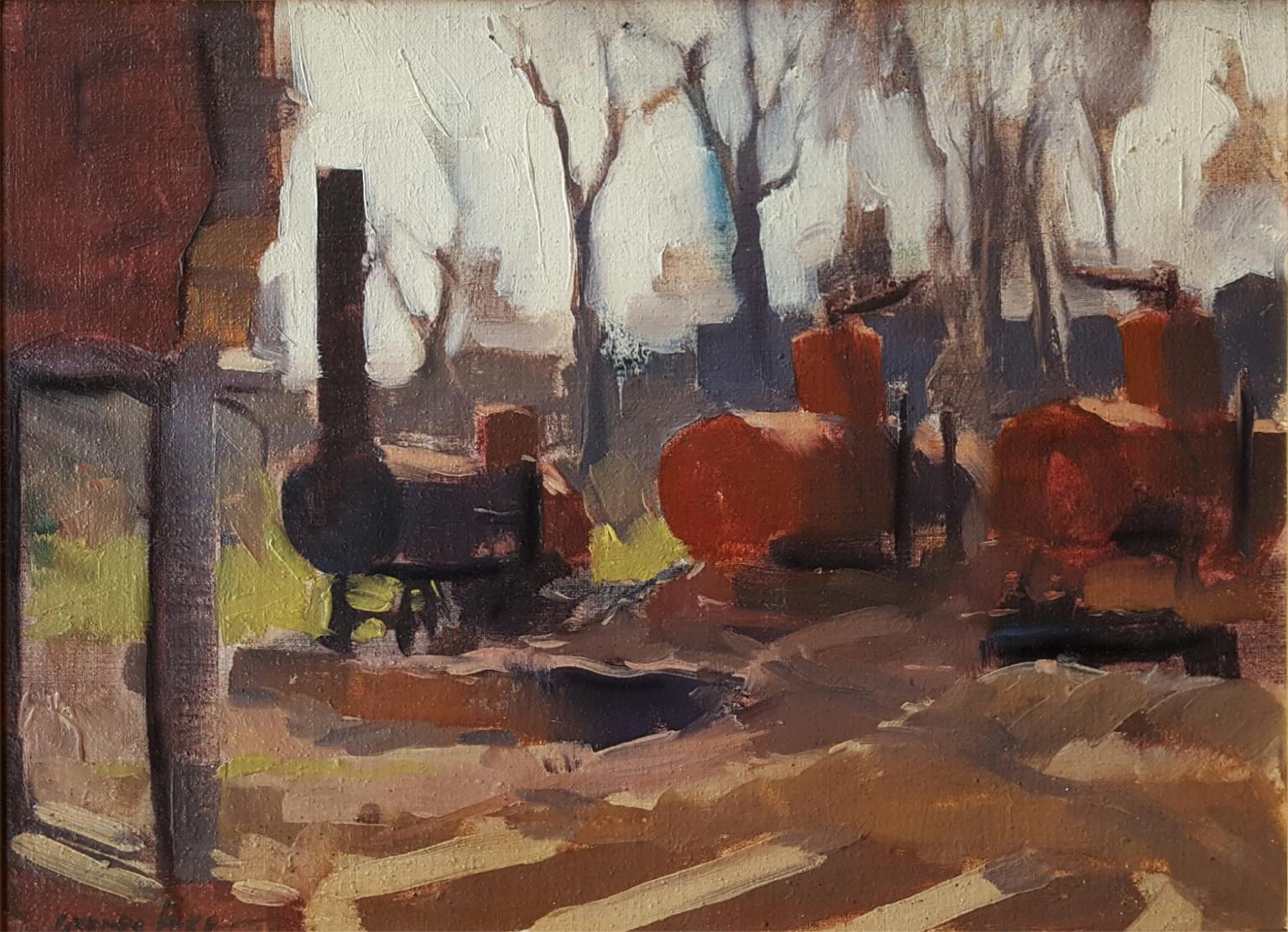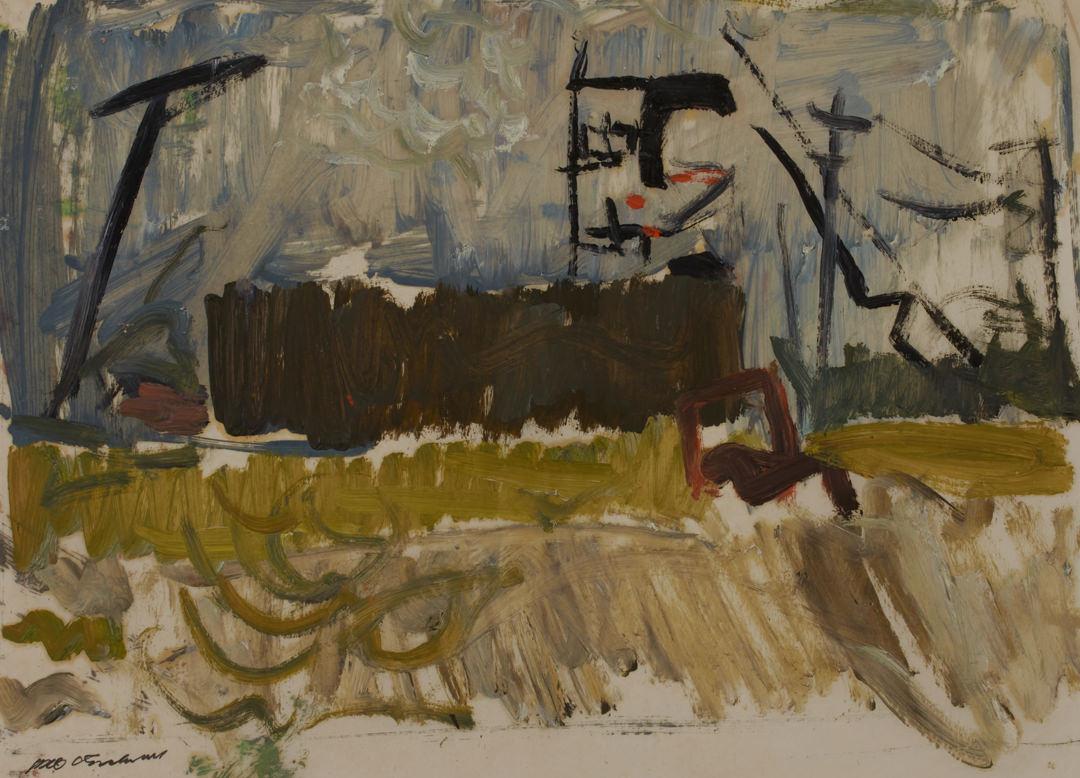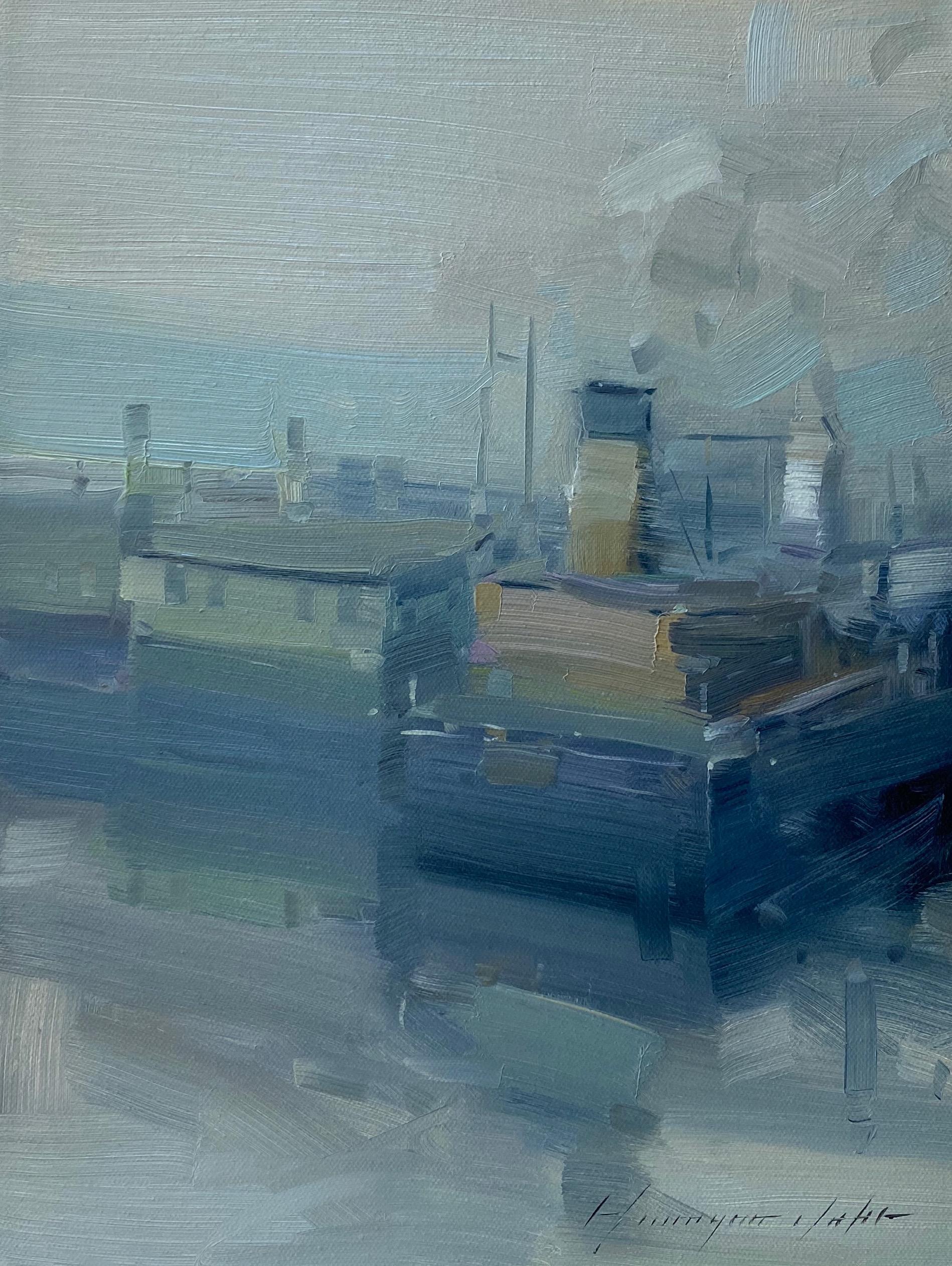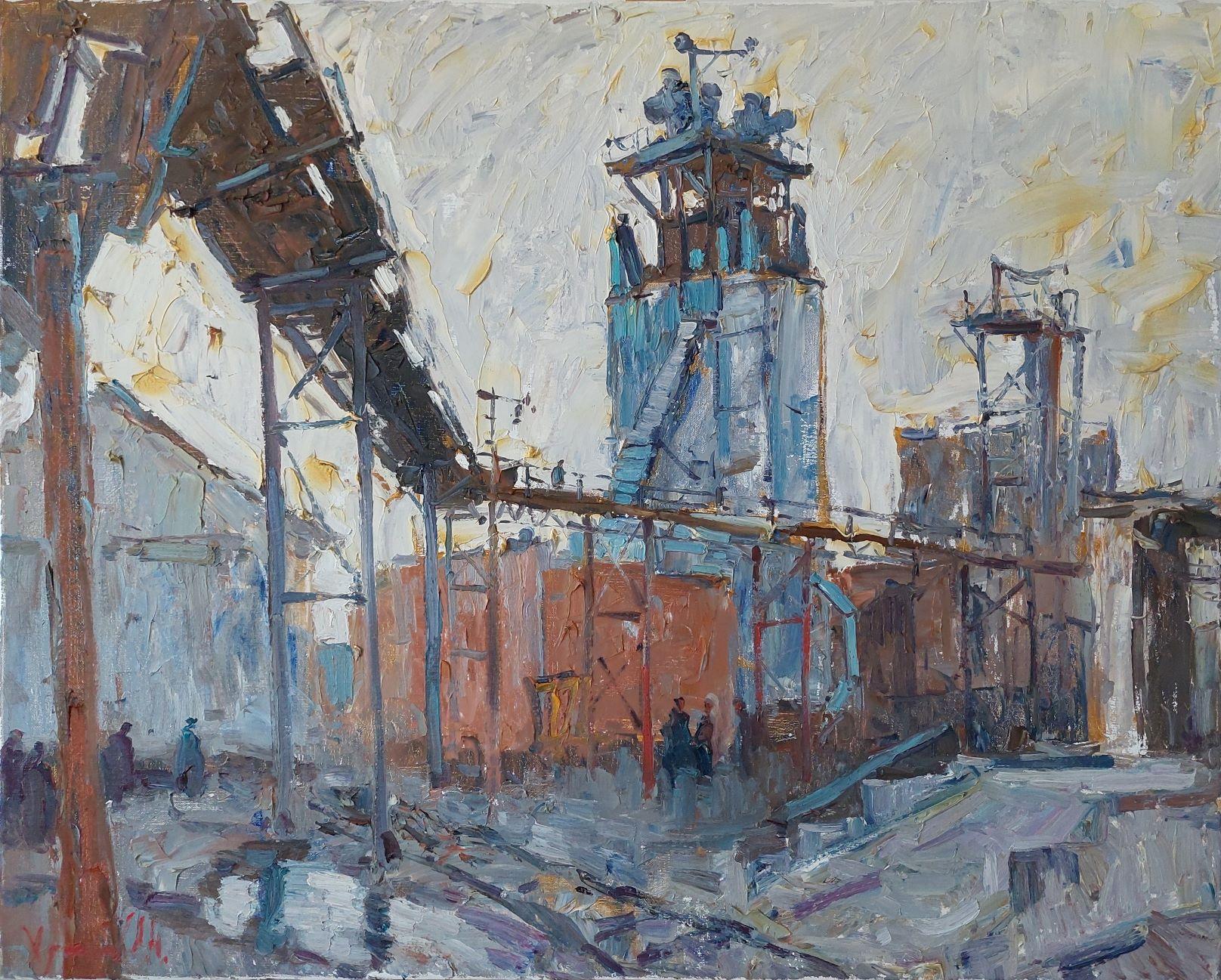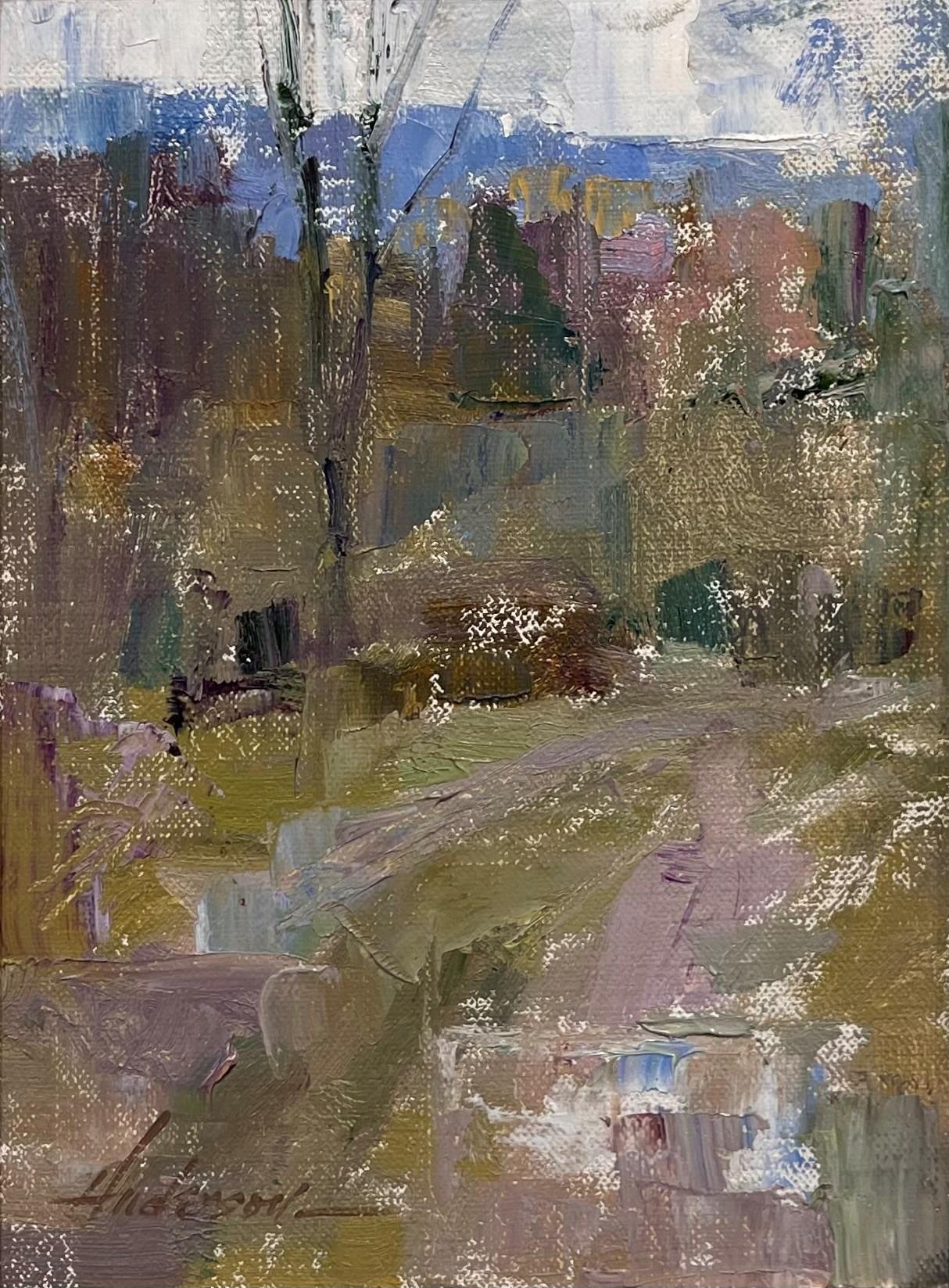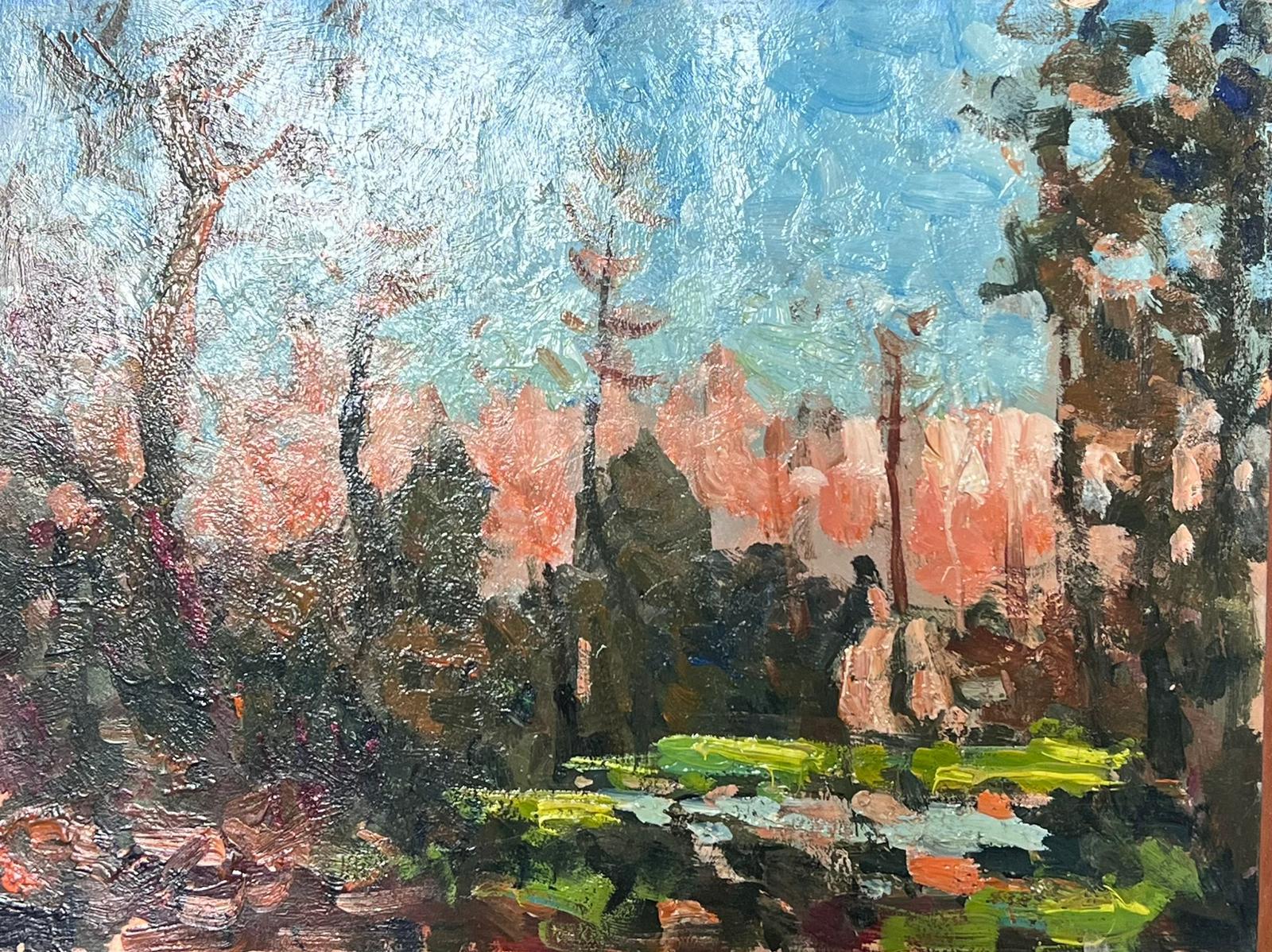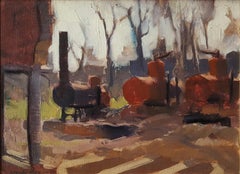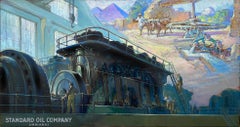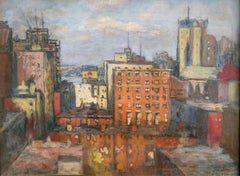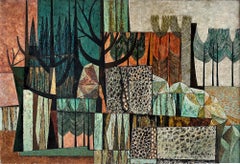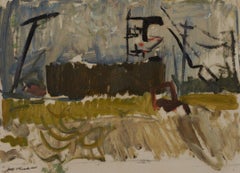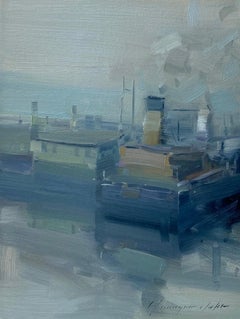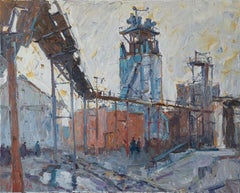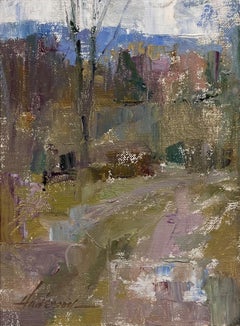Items Similar to Industria Landscape - Post-Impressionist Brush Strokes
Want more images or videos?
Request additional images or videos from the seller
1 of 7
George Benjamin LuksIndustria Landscape - Post-Impressionist Brush Strokes1900-1929
1900-1929
$18,500
£14,089.46
€16,218.86
CA$26,511.99
A$29,007.66
CHF 14,967.87
MX$347,363.64
NOK 190,024.22
SEK 178,034.37
DKK 121,121.25
About the Item
Three engines sit in a wasted landscape described in a palate of warms grays, browns and ochers in broad quickly applied brush strokes.
Quick and confident brush strokes describe the gritty forms of perhaps steam engines or railroad yards. Luks bravura style of putting paint to canvas anticipates action painting of the Abstract Expressionists who would follow Luks generations later. Sotheby's, New York, March 2005 Cigna Museum and Art Collection Exhibitions: Beyond the Liberty Bell, Philadelphia Art from the Cigna Museum,White Planes, New York, 10/30/1995 - 1/31/1996 Housed in a quality reproduction frame signed lower left
- Creator:George Benjamin Luks (1867-1933, American)
- Creation Year:1900-1929
- Dimensions:Height: 12 in (30.48 cm)Width: 16 in (40.64 cm)
- Medium:
- Movement & Style:
- Period:
- Condition:Good.
- Gallery Location:Miami, FL
- Reference Number:1stDibs: LU385316170552
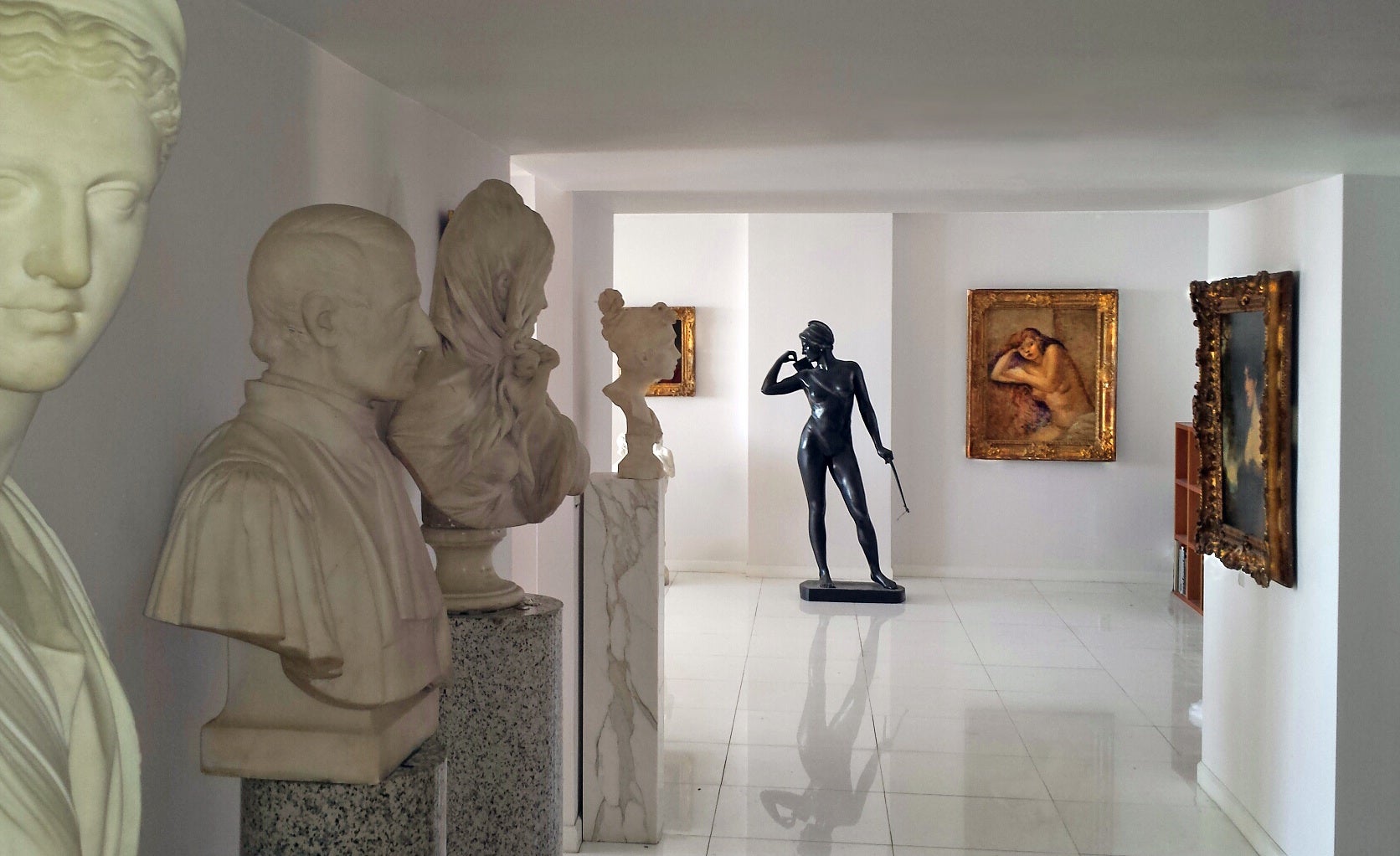
About the Seller
5.0
Vetted Professional Seller
Every seller passes strict standards for authenticity and reliability
Established in 2005
1stDibs seller since 2016
117 sales on 1stDibs
Typical response time: 1 hour
- ShippingRetrieving quote...Shipping from: Miami, FL
- Return Policy
Authenticity Guarantee
In the unlikely event there’s an issue with an item’s authenticity, contact us within 1 year for a full refund. DetailsMoney-Back Guarantee
If your item is not as described, is damaged in transit, or does not arrive, contact us within 7 days for a full refund. Details24-Hour Cancellation
You have a 24-hour grace period in which to reconsider your purchase, with no questions asked.Vetted Professional Sellers
Our world-class sellers must adhere to strict standards for service and quality, maintaining the integrity of our listings.Price-Match Guarantee
If you find that a seller listed the same item for a lower price elsewhere, we’ll match it.Trusted Global Delivery
Our best-in-class carrier network provides specialized shipping options worldwide, including custom delivery.More From This Seller
View AllIndustrial Landscape
By George Luks
Located in Miami, FL
Quick and confident brush strokes describe the gritty forms of perhaps steam engines or railroad yards. Luks bravura style of putting paint to canvas anticipates action painting of ...
Category
1930s Abstract Expressionist Landscape Paintings
Materials
Oil
$14,800 Sale Price
20% Off
Wheels of Industry Past and Present, Golden Age of Illustration - Standard Oil
Located in Miami, FL
This Golden Age of Illustration painting juxtaposes modern and ancient industrial practices. Giant eclectic generators from the current ti...
Category
Mid-20th Century Academic Landscape Paintings
Materials
Gouache, Board
$12,000 Sale Price
20% Off
New York Skyline the West Side with Hudson River - Vintage New York
By Frank S. Hermann
Located in Miami, FL
Rooftop view of the upper West Side Manhattan as it looked in the 1930s. There is a rough indication of a billboard and a glimpse of the Hudson River. The cluster of buildings depic...
Category
1930s American Impressionist Landscape Paintings
Materials
Oil, Gouache, Board
Landscape Abstraction - Mid-Century - Twenty Paintings in One
Located in Miami, FL
When it comes to abstract painting, the creation date is important. At the height of Abstraction Expressionism, overlooked Academic Artist John Atherton created a wonderfully complex painting that embodies many of the characteristics of what was going on in Mid-Century American Art. The work is simultaneously abstract as it is representational. Like a Bento Box, it's divided into sections by dividers. On close inspection, each section stands on it's own as a beautiful mini-painting yet coalesces as part of the whole. From a distance, it is eye-pleasing, but as the view gets closer and closer, new structures and details gloriously reveal themselves. This is an important painting and not unlike the work of Joaquín Torres-García. It was done in the last year of the artist's life. Signed lower right. Canvas is relined. Framed size: 30 x 41.25. The work is best viewed with top gallery lights to bring out color.
Color will look different under different lighting conditions. Atherton exhibited at the famous Julien Levy Gallery in New York and his fine art is mainly associated with Magic Realism. He participated in the seminal 1943 Museum of Modern Art exhibition, American Realists and Magic Realists. The Museum of Modern Art has 4 Atherton paintings in its collection. As an Illustrator, Atherton did covers for the Saturday Evening Post, Fortune and Holiday Magazine...
Category
1950s Abstract Expressionist Abstract Paintings
Materials
Canvas, Oil
Storm Composition #3
By Abraham Rattner
Located in Miami, FL
An early example of Abstract Expressionism executed in 1955 during the movement's heyday and it's period of peak inventiveness. However, this work is still rooted in representation. The dark area the runs along the base of the picture is the ground and to the left, right and center there are black structures that represent trees. The work is very tactile and is composed of globs of paint that grow out from the surface and form a thick impasto. Rich vibrant saturated blues, reds and oranges create optical drama. The work look better in person. frame: 29 x 39 1/2 inches , Provenance: Kennedy Galleries
The Currier Gallery of Art...
Category
1950s Abstract Expressionist Abstract Paintings
Materials
Oil
City Scape Abstract Expressionist Composition -Jackson Pollack Friend
By Joseph Meert
Located in Miami, FL
The fame, notoriety, and monetary value of an artist's work in today's market are not based on one's talent and vision. Factors such as marketing and media momentum play a defining r...
Category
1940s Abstract Expressionist Abstract Paintings
Materials
Gouache, Board
You May Also Like
20th Century Industrial Cityscape Oil painting, Cleveland School Artist
By Joseph O'Sickey
Located in Beachwood, OH
Work sold to benefit the CLEVELAND INSTITUTE OF ART
Joseph B. O’Sickey (American, 1918–2013)
Industrial Cityscape
Oil on paper
Signed lower left
13.75 x 16.5 inches
Joseph O'Sicke...
Category
Late 20th Century Post-Impressionist Landscape Paintings
Materials
Oil
Factory, Original oil Painting, Ready to Hang
By Vahe Yeremyan
Located in Granada Hills, CA
Artist: Vahe Yeremyan
Work: Original Oil Painting, Handmade Artwork, One of a Kind
Medium: Oil on Canvas
Year: 2022
Style: Impressionism,
Subject: Factory,
Size: 13" x 9.5" x 0.8...
Category
2010s Impressionist Landscape Paintings
Materials
Canvas, Oil
$200 Sale Price
20% Off
Industry_
Located in Edinburgh, GB
Plein air
Category
2010s Impressionist Landscape Paintings
Materials
Canvas, Oil
"Landscape Study" (2011), Original Expressionist Landscape Oil Painting
By Carolyn Anderson
Located in Denver, CO
This piece measures at 8 x 6 in., and is framed at 11.50 x 9.50 in., ready to hang.
Artist Biography:
Carolyn Anderson, a nationally recognized artist, is an accomplished pastelist...
Category
2010s Expressionist Landscape Paintings
Materials
Oil
Bright Colour French Impressionist Oil Landscape
By Maurice Mazeilie
Located in Cirencester, Gloucestershire
"Landscape"
by Maurice Mazeilie (French)
oil painting on artist paper, unframed
painting: 6.5 x 8.75 inches
A delightful original oil painting by the 20th century French Impression...
Category
20th Century Impressionist Landscape Paintings
Materials
Oil
"The color of the industry"
Located in Edinburgh, GB
The Colour of Industry is an impressive canvas by Alexander Khrapachov that reveals the unexpected beauty of the industrial landscape. Created in 2013 during a plein air work on the ...
Category
21st Century and Contemporary Impressionist Figurative Paintings
Materials
Canvas, Oil
More Ways To Browse
Sothebys Antique
Antique Engine
Antique Steam
Antique Planer
Antique Paint Brushes
Steam Engine
Antique Steam Engine
Liberty Bell
Japanese Garden Painting
Jenkins Oil Painting
Landscape Painting By W Hampton
Large British Painting Modern
Mid Century Tropical Art
Oil Painting Richmond
Oil Paintings Of Homes
Old Masters Venice
Painting California Hills
Painting Switzerland Lake
